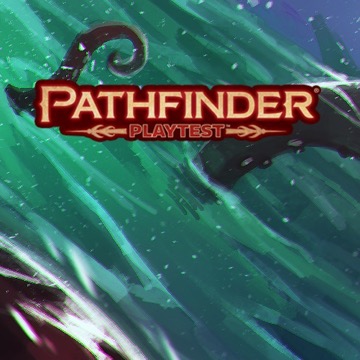The time has come to once again move on to the next part of Doomsday Dawn, entitled "Red Flags"! This time, a group of new operatives is sent by the Esoteric Order to the Shackles as part of a desperate mission to stay one step ahead of the Night Heralds. Once you have had a chance to play this adventure, make sure to stop back here and take the surveys. Your responses are critical to our understanding of high-level play!
Player Survey | Game Master Survey | Open Survey
We know that the hectic pace has been hard to keep up with, but we would like to encourage you to keep playing and submitting your playtest results, even if the focus has moved on. As a reminder, all of the Doomsday Dawn surveys will remain open through the end of the playtest period!
Update 1.5 Is Alive!
Throughout the playtest we’ve been gathering a lot of feedback about spells and their relative power level in the game, especially regarding how they compare to spells as they were used in Pathfinder First Edition. While some of these changes were made to prevent problematic situations in play, others were made to help them function more cleanly in the new edition’s structure.
The survey results are pretty clear that we have succeeded in those goals for some areas of spellcasting and fallen short in others—sometimes significantly short. Fortunately, because this is a playtest, we can make adjustments and get more feedback. As of this update, we are increasing the power level of some spells, starting with those that deal damage, as they are the easiest ones to adjust, update, and test. Update 1.5 contains a list that includes the majority of the damage-dealing spells in the game, revising their overall damage values. Fireball, for example, has gone from dealing 6d6 fire damage to dealing 8d6 fire damage. This doesn’t affect how the spells scale, other than to adjust the base value (so a 4th-level fireball spell will deal 10d6 fire damage).
We want to stress that these are not the only changes that will be happening to spells between now and the final version of the game, but they are the ones that we can most easily present for additional playtesting.
This update also contains a few other small alterations. While the dying rules have been well received since Update 1.3, there are still some improvements that might be made. In this update, we’ve changed the saving throw for stabilizing when dying to a flat check (DC = 10 + the dying value). We want to stress that this is purely a test to see how players respond to this as opposed to the Fortitude saving throw with a DC set by the monster. This is a change that we might roll back depending on feedback.
There has also been a small change to Treat Wounds: the DC of the skill check is now set by the highest level of the character being treated. This was changed to clear up some odd issues with high-level characters having difficulty when healing targets that are of a much lower level. Again, Treat Wounds is still very much a rule that we are evaluating, and I think it is safe to say that it will probably change in some ways before we see a final version.
Ready to add these changes to your game? You can download the newest update right here!
Updates and Changes
There has been some amount of consternation here and on other sites about the changes that are being rolled out as part of the updates, and what those changes say about the other rules that aren’t included in the updates. Right now, to keep the test focused, we are releasing rules updates only for things that we feel we can cleanly update and that need more testing, but that is by no means the full scope of the changes happing to the game here in the office.
Your feedback has told us a great many things about the game, and we’ve been using that feedback to shape the rules as we move through the process. It is important for all of you to understand that even if you don’t see a rule being addressed in the updates or we aren’t speaking about it directly on the forums, that doesn’t mean it isn’t being modified or reevaluated for the final version of the game. As we said at the start of the playtest, every aspect of the game is on the table to change, depending on your feedback. Even if some of those changes might be too sweeping to implement in the midst of the playtest, we will make the changes needed to make the final game the best it can be. We’re excited to share what those changes and alterations will be, but the right time for that is after we have completed the playtesting process and are certain of what those changes will be.
Having participated in every open playtest this company has ever conducted, I can honestly say that this one has provided us with more valuable feedback and insight into how you play than any other test we have ever conducted. I am confident that it will show through in the new version of Pathfinder.
Jason Bulmahn
Director of Game Design
Join the Pathfinder Playtest designers every Friday throughout the playtest on our Twitch Channel to hear all about the process and chat directly with the team.









